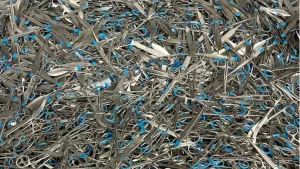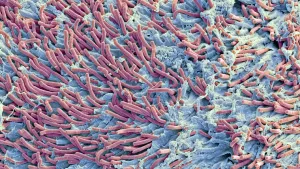10 concrete steps to make your OR more sustainable
Kim Taylor · · 5 min readGoing green and sustainable in the Operating Room (OR) is a challenge for many surgeons, nurses, and other medical professionals. In fact, based on recent research published at the National Institute of Health 30% to 40% of the materials that come into the hospitals are used by the OR and about 20% to 30% of the total hospital waste is caused by the OR.
Some countries like the Netherlands aim at becoming CO2 neutral by 2030, while in the UK the National Health Service intends to be carbon neutral in its own operations by 2040. As the Academy of Royal colleges (AoMRC) highlighted:
Sustainable healthcare involves ensuring the ability to provide good quality care for future generations by balancing the economic, environmental, and social constraints and demands within health care settings.
If you are also interested in being an adherent of this mission here are 10 steps that we gathered to help you and your team get started…
1. Use reusable products as a default
The first step towards leaving your environmental footprint is the usage of reusable products. These can vary from surgical linens such as gowns and drapes, to medical instruments (reusable laryngoscope, scissors) and other medical equipment (e.g. bowls, medication trays, sterilisation trays). Reusable products should be utilised when they are proved to be equal or superior in terms of infection prevention, hence OR staff can mitigate climate change without jeopardising patients’ safety.
2. Optimise your pre-packs
Pre-packs are an efficient way to use disposables in the OR. All disposables needed for a certain procedure are included in this pre-pack, making preparation for a procedure easy and simple. However, in almost every pre-pack, products are included that are not used during the procedure. These items have to be thrown out after the procedure is completed and end up in the waste bin without ever being touched by human hands. By removing these items at the manufacturer’s site, less waste is created in the OR.
3. Change your use of Anaesthetic gases as these are potent greenhouse gas emissions
Inhaled anesthetics harm the environment as a great percentage is vented into the atmosphere where they can affect global warming up to 2,500 times more than carbon dioxide. Hence, we would advise you to avoid desflurane in your OR and try to minimise the usage of Sevoflurane and isoflurane when it is only considered absolutely necessary. And if you are wondering what is the substitute of the above mentioned anesthetic gases, we recommend propofol.
4. Use optimised surgical trays
When operating a surgery, opt for optimised surgical trays that contain reusables. With this simple action you will minimise sterilisation emissions and once again contribute to a more green OR. An optimised surgical tray means less water, less detergent, and less energy needed for cleaning and sterilisation.
5. Use medication as sustainably as possible
This step is as easy as it sounds. After using any medication, make sure that medication is thrown to the appropriate bin. Also, prevent medication waste by measuring the right amount of medication and be mindful when opening a new bottle or package.
6. Optimal energy use
Energy consumption varies between day and night. After all, most surgeries are performed during the day and only a small percentage during the night. The installation of automatic lights will help reduce energy usage. At the same time, medical staff or automatic systems could ensure that the airflow is switched off or on lower flow at night.
7. Recycle!
In the preparation room of the OR, clean waste (non-contaminated) can be divided between plastic and paper waste. How can you achieve this easily and efficiently? Use multiple waste bins with clear indication (poster, sticker) of contents belonging in the bin. Next to the 'standard' waste segregation of paper and mixed plastics, several other materials can also be separated in the preparation room, depending on your waste handler.
8. Sustainable sterilisation department
One of the most important procedures prior to surgery is sterilisation. A sustainable sterilisation department uses optimised processes using a minimal amount of water, energy, and cleaning products. Usage of eco-friendly washing machines and eco-friendly detergent also contribute to sustainable sterilisation.
9. Manage your stock
Organisation and smart planning are the keys to a more sustainable OR. Start by controlling your stockage and avoiding keeping an excessive number of sterile products that can expire, such as suture sets and pre-packs.
10. Be sustainable during your coffee and lunch breaks
In order to make a small (but yet significant!) impact on the environment, avoid offering food in excessive plastic food wrappers in the cafeteria. Served food for personnel could include reusable tableware and the use of no bottled water could be increased. Last but not least, cups - either disposable or reusable - could be used multiple times (by the same person) to limit waste creation/dishwasher activity. Curious to know how scrub nurses in The Netherlands apply these steps? In the second series of our blogs, we talk with Talitha Hoppe, scrub nurse at OLVG in Amsterdam. Click on the link below and find a useful guide to get the most out of recycling in the OR.
This post was created in collaboration with Green Care Academy.







